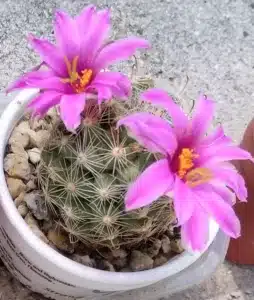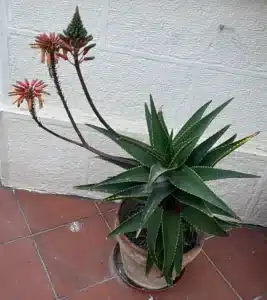How to grow a Cactus - Guide
We all want to brighten up our homes with the exciting lives of living plants, that grow in harmony with us humans. With the right know-how, anyone can turn your home into a cactus paradise. In this guide, we’ll guide you through the process for the best result.
Cultivating and how to take care of a cactus is simpler than you think, It is fairly easy to turn your whole home into a cactus garden or to turn a little corner of your home into an oasis in the desert!: with a few steps, anyone can become a cactus planting maestro! No special skills or equipment are needed—just basic gardening tools and straightforward instructions. We’ll show you exactly how to start, so your home can be adorned with beautiful cacti in no time. Soon enough, friends and family will be seeking your advice on turning their homes into scenes from adventurous movies.
Find your perfect cactus environment
Before making your selection, consider a few things. First, determine where in your home or garden this cactus will live and what conditions it needs to thrive. Are you looking for something that can thrive indoors or outdoors? Do you live in a warm or cold climate? Does it need direct sunlight or filtered light?
All these questions are essential before choosing. Different cactus species have different care and needs that you must consider when selecting the perfect plant for your home. Once you’ve researched and narrowed down your options, it’s time to gather supplies for planting!
Although, there are many types of cacti with different needs. The vast majority originates from very dry and arid landscapes and require very similar care. Therefore, a general guide for cacti care will take us pretty far.
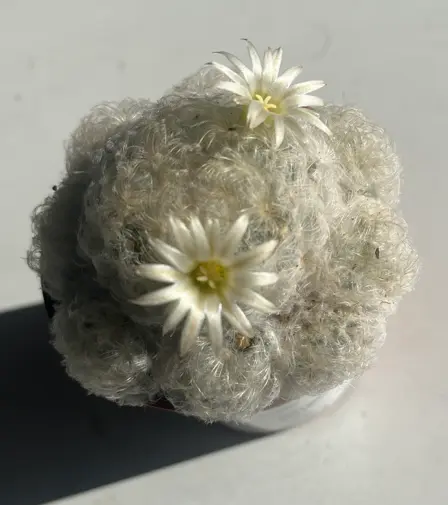
Flowering Mammillaria Plumosa
Best soil for a cactus
Now that you’ve gathered everything you need to plant a cactus, it’s time to get to work. Soil preparation is essential for successful planting. Let’s start by determining the best type of soil for your cactus care.
Cacti thrive in sandy soils with good drainage, but they can also do well in other types of soil if mixed properly. You can mix a standard potting or garden soil with coarse sand and/or small gravel, perlite, or pumice to make it more suitable for cacti. You can also add organic matter, such as compost or aged manure, to increase nutrient levels and promote healthy root growth.
The right soil will provide your cacti with the correct balance between water retention and drainage. If the soil drains too quickly, the plant might become dehydrated; if it retains too much moisture, there’s a risk of overwatering and root rot. Check the quality of the soil mix before starting to plant: moisten it and squeeze a handful; if water drains easily, and the soil crumbles when released, you’re good to go.
Ready to plant? With these tips in mind, you’ll give your cactus a great start in its new home.
Suitable pot for a cactus
Now that you’ve prepared the soil for your cactus, it’s time to plant it in a suitable pot. Properly planting the cactus is essential for its health and growth. Here’s what you should do:
Start by choosing a pot with enough space for the cactus to grow. Ensure the pot has drainage holes at the bottom. Select a specific cactus and succulent soil mix. Once you’ve chosen the right pot, carefully remove the cactus from its current container. Clean off the old soil with a brush and check for pests or diseases in the cactus’s roots or stem. Place the cactus in its new pot, making sure the root system is fully covered with soil and the stem is slightly higher than when it was in the previous pot. Firmly press the soil around the base of the stem and water lightly until it’s moist but not saturated.
After planting the cactus, it’s time to keep it healthy: watering! The amount of water needed depends on various factors, such as temperature, sun exposure, and the type of soil used…
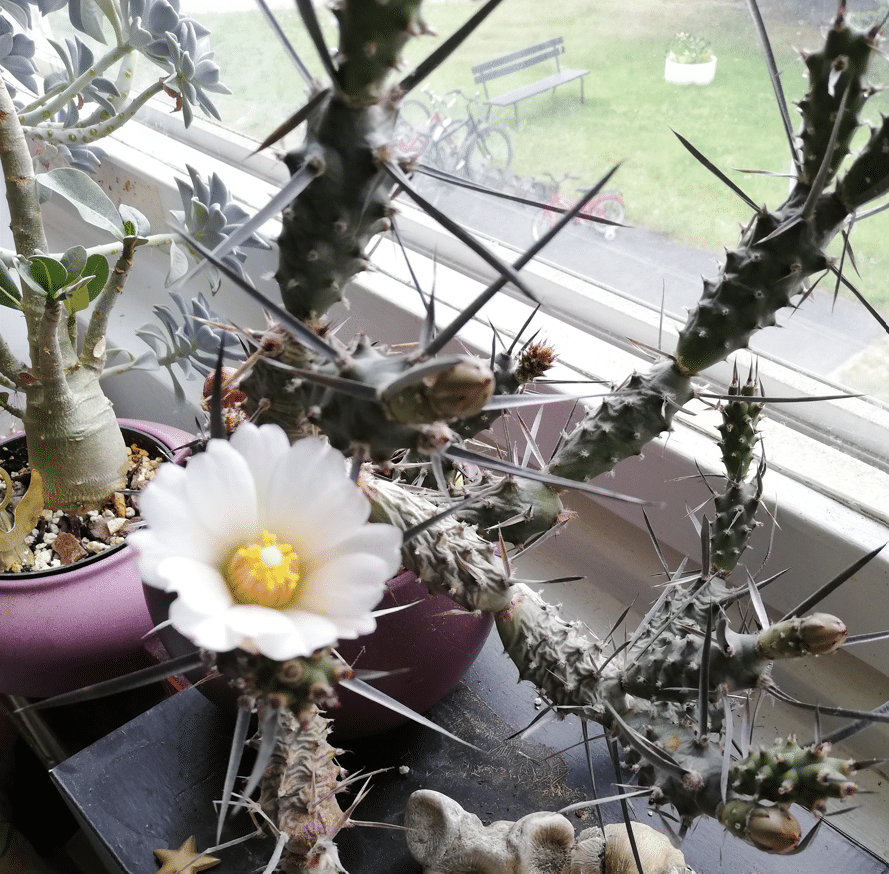
Flowering Tephrocactus Articulatus
How to water cacti
Watering a cactus is like giving it a warm hug and letting it know you care. With the right affection, your cactus will thrive in its new home and bring you joy for years.
Like any other plant, cacti need regular watering to stay healthy and happy. However, overwatering can lead to root rot and ultimately kill the cactus, so finding the optimal watering point is crucial. The best way to check if the cactus needs water is to feel the soil with your finger. If it’s dry about five centimeters below the surface, it’s time to water.
When giving your cactus a drink, don’t pour water directly onto the soil; instead, use a cup or pitcher to pour it slowly around the base of the plant until it starts to drain from below. This ensures that all parts of the soil are evenly moistened. Once the cactus has received enough water for now, let the excess drain before moving on to fertilizing and caring for it in other ways.
Your little desert friend has taken its first steps in its new home; now, let’s help it take the next ones!
How to fertilize your cactus
Fertilizing your cactus is a crucial part of its health and growth, so let’s look at what you need to know. When fertilizing a cactus, several things need consideration. Firstly, use a specialized fertilizer designed specifically for cacti and succulents; this ensures your plant gets the nutrients it needs without overwhelming it with too much food. Secondly, don’t fertilize too often—once every two months should be sufficient. Lastly, dilute the fertilizer according to the label instructions; pouring too much into the potting mix could burn or damage the plant.
Now that you know how to fertilize your cactus correctly, it’s time to place it in the right spot. Ensure you find a location with plenty of sunlight and well-draining soil; this will help your cactus stay healthy and happy.
Best location for a cactus
Once the cactus is planted and fertilized, it’s time to place it in the right spot. Planting a cactus in the wrong location can hinder its growth and success. You must understand a cactus’s needs for it to thrive.
Think about a location where the cactus receives plenty of light. Cacti love direct sunlight, so make sure to find a spot that gets at least six hours of direct sunlight each day. Also, choose an area with good air circulation and proper drainage. Ensure the containers you plant them in have drainage holes; otherwise, your cacti might suffer from root rot or other issues due to excess moisture.
Best temperature for a cactus
If planting outdoors, it’s crucial to choose a location where temperatures don’t drop below freezing. If you live in areas with cold winters, consider bringing the potted cacti indoors before temperatures get too low. With a little preparation, you can ensure your cactus has the ideal environment to thrive. Now that we’ve planted our cactus and placed it in the right spot, let’s learn about its needs for successful growth.
Understanding the needs of a cactus
A cactus symbolizes resilience and growth in adversity. With its thick, pointed body, it stands tall and proud even in the harshest conditions. Its minimal care requirements make it an ideal choice for many gardeners. But understanding what a cactus needs to thrive is key to creating a happy, healthy plant that will accompany you for years.
The first step in understanding a cactus’s needs is sunlight. Almost all types of cacti need bright light throughout the day but also some shade during the afternoon hours when the sun’s rays are most intense. Ideally, place the cactus near an east-facing window or balcony, so it receives plenty of light without being exposed to excessive heat. Additionally, rotate the cactus occasionally to ensure it gets an equal amount of light on all sides.
As for water, cacti don’t need as much as other plants; they should be watered approximately every two weeks during their growing season (spring and summer). When you water them, do it enough to make the soil barely moist; avoid overwatering, as this can lead to root rot or fungal diseases. If you’re concerned about them getting waterlogged, place stones around the pot to retain moisture, ensuring there’s space between them and the roots.
Finally, keep the cactus away from walls and other obstacles that may obstruct air circulation. This reduces the chance of mold forming on the leaves, something no one wants to deal with. With these tips in mind and regularly checking your cactus’s health, you’ll have a beautiful flowering plant in no time. Onwards with the care of our beloved succulent friend!
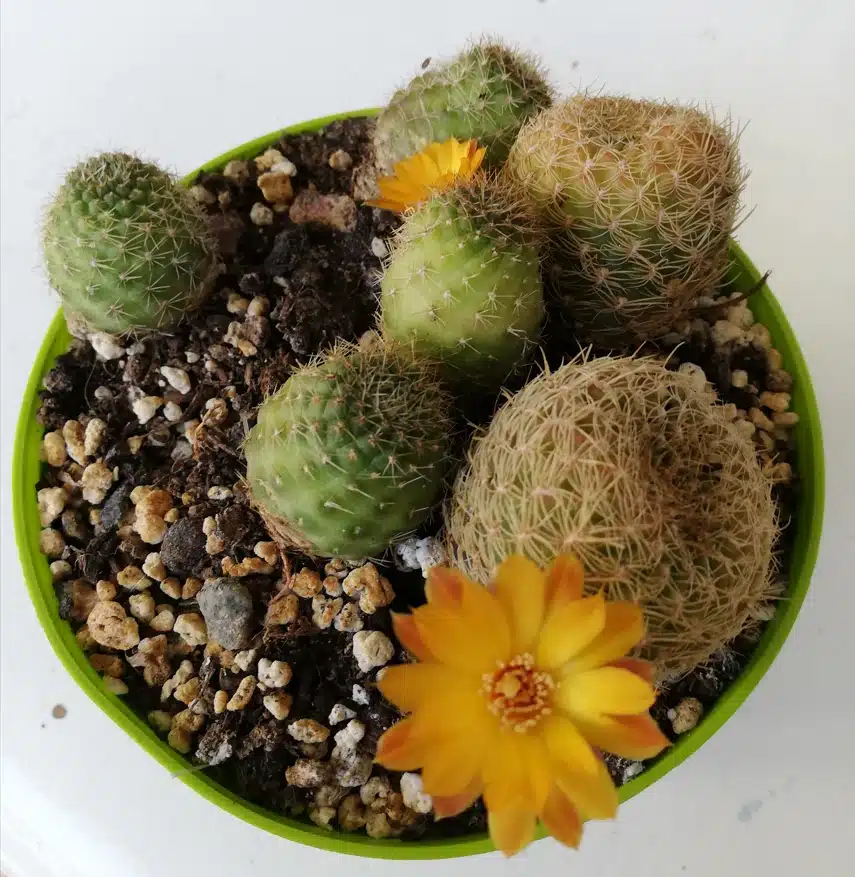
Flowering Sulcorebutia
Caring for a cactus
Caring for a cactus is a significant step in maintaining your plant’s health. Did you know there are over 2,000 species of cacti? It’s true! So, to better care for your new prickly friend, consider a few key steps.
Firstly, it’s essential that the cactus receives plenty of sunlight and warmth. Ideally, it should get at least 6 hours of direct sunlight daily. If possible, try to provide as much sun as you can, as this will help it thrive. Also, ensure the cactus is in a pot with good drainage; otherwise, it can easily become waterlogged and die.
Next, cacti need very little water—normally no more than once or twice a month during the growing season and only every few months during winter when they’re dormant. Overwatering is one of the most common mistakes made with plants, so be cautious when watering cacti. Additionally, you should fertilize them once or twice a year with a specialized fertilizer designed for cacti and succulents; this will help them grow strong and healthy!
With these simple tips, your cactus will have a long and happy life. Now, let’s look at how to address the most common problems these plants might encounter.
Common challenges for cacti
As the saying goes, sometimes the biggest challenges come in small packages, and the same holds true for cacti. While cacti don’t require as much maintenance as other plants, it’s essential to address any problems that may arise. Here’s how to solve the most common cactus problems and keep your little friend healthy and happy.
Firstly, it’s crucial to know that each cactus has unique needs based on its species. For instance, some prefer more sunlight, while others need more shade; some need more water than others. Understanding your cactus’s specific requirements will help you anticipate issues before they occur and take action accordingly.
The most common problems include overwatering or underwatering, sunburn from excessive direct sunlight exposure, infestations of mealybugs or aphids, and stem or root rot from excessive watering. To prevent these issues, water cacti regularly and only when necessary: if you stick your finger in the soil and find it dry a few centimeters below the surface, it’s time to water. Additionally, if possible, keep the cactus away from direct sunlight for extended periods; if you can’t, shield it from the sun with a thin cloth or paper towel. Lastly, inspect the plant regularly for signs of pests or rot. If you notice any problems, take immediate action, such as using insecticides or fungicides if necessary.
Finally, with a good understanding of your cactus species and vigilance for potential issues related to sun exposure or overwatering, you can address most problems quickly and effectively without jeopardizing the plant’s health. Happy gardening!
Conclusions about growing cacti
Caring for a cactus can be a fun and rewarding experience when done right. It’s essential to know the cactus’s needs, such as the type of soil, watering frequency, and light exposure. With proper care and attention, your cactus will thrive and bring you many years of joy.
In general, planting a cactus is a relatively straightforward process. As long as you choose the right type of cactus for your environment, prepare the soil correctly, water it appropriately, and place it in a suitable location with plenty of sunlight, you’ll have a beautiful cactus garden in no time! It’s almost like magic: just create the necessary conditions for success and marvel at how your desert plants come to life before your eyes.
If you’ve ever wondered how to plant a cactus, now you know! Go out there and start cultivating some of these incredible plants today. You’ll be amazed at how quickly they transform into something incredibly amazing that brightens up your home.


